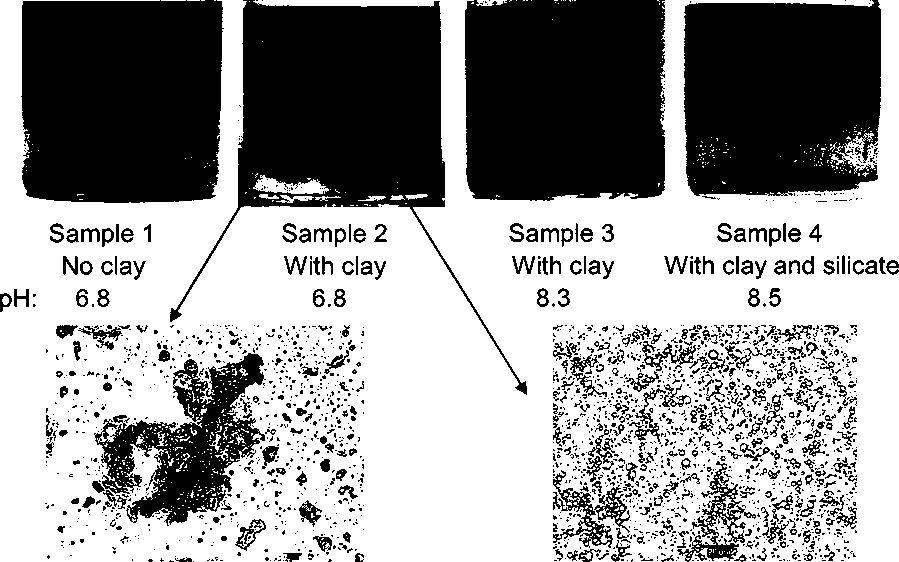Chapter 4
4. Clay wettability and zeta potential characterization
This chapter mainly discusses clay wettability and its effect on rag layer. Zeta
potential measurement is used to characterize wettability change of clay.
4.1. Rag Iayerand clay wettability
Figure 4.1 shows 11.2 hours separation results of brine in diluted bitumen
(N∕B 0.7) emulsions and 200 ppm demulsifier PR5 at different pH, prepared at
30 oC as described in section 3.5.2.

Figure 4.1 11.2 h diluted bitumen emulsions adding 200 ppm PR5 at 30 oC
Samplel is the emulsion without clay solids using 1.0 w.% NaCI brine at pH
6.8 (sample 4 in chapter 3). Sample 2 is the emulsion with clay solids using 1.0
86
More intriguing information
1. Optimal Tax Policy when Firms are Internationally Mobile2. Effects of red light and loud noise on the rate at which monkeys sample the sensory environment
3. Monetary Policy News and Exchange Rate Responses: Do Only Surprises Matter?
4. Word searches: on the use of verbal and non-verbal resources during classroom talk
5. Empirically Analyzing the Impacts of U.S. Export Credit Programs on U.S. Agricultural Export Competitiveness
6. The name is absent
7. International Financial Integration*
8. Should Local Public Employment Services be Merged with the Local Social Benefit Administrations?
9. Monopolistic Pricing in the Banking Industry: a Dynamic Model
10. Om Økonomi, matematik og videnskabelighed - et bud på provokation